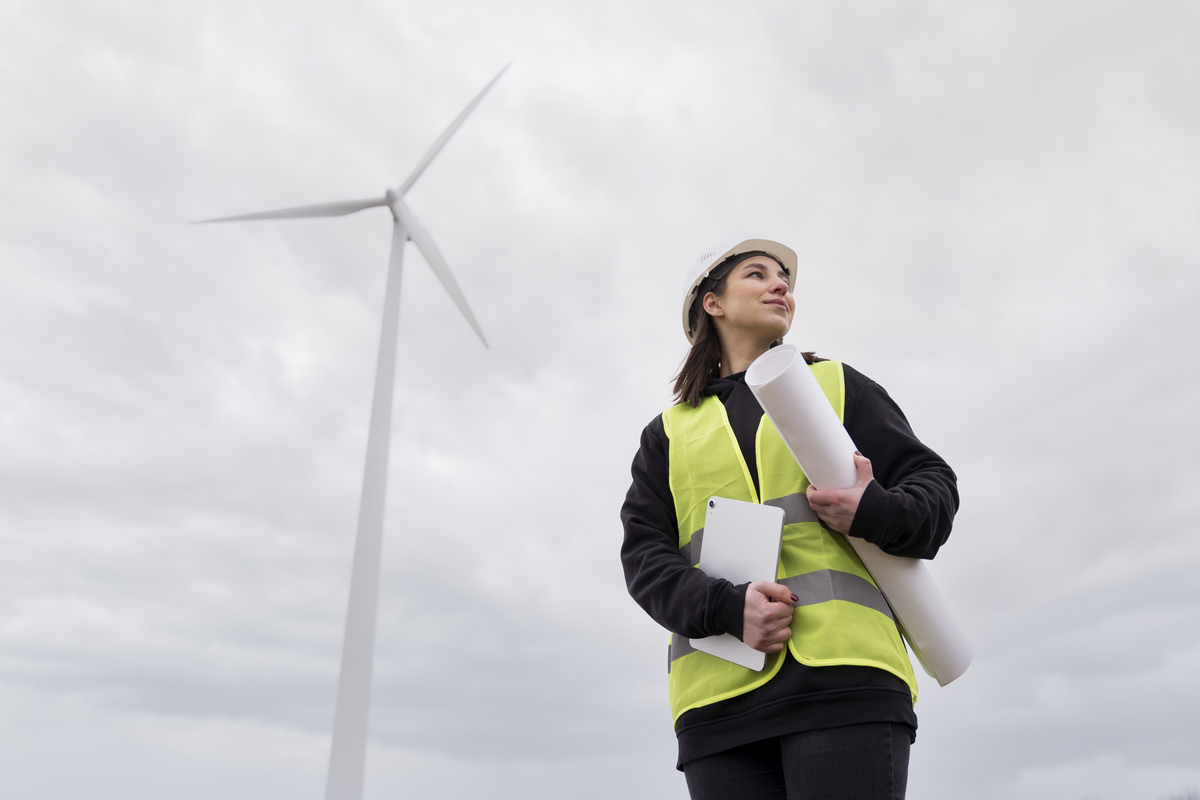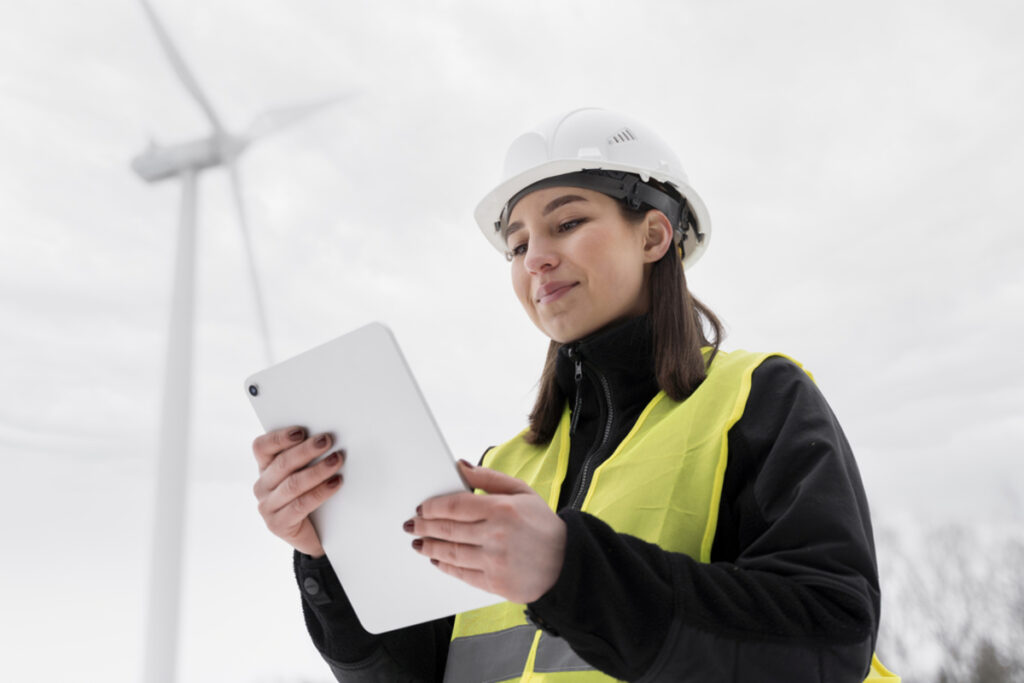The construction industry stands as a formidable contributor to global carbon emissions, accounting for approximately 38% of energy-related carbon dioxide emissions worldwide. According to the International Energy Agency (IEA), the built environment is responsible for nearly 10% of global greenhouse gas emissions annually. As societies continue to urbanize and infrastructure demands escalate, the environmental footprint of construction activities amplifies, exacerbating climate change concerns. Understanding the scope and impact of construction emissions is pivotal in formulating effective strategies for decarbonization.
This introduction provides a stark reminder of the urgency to address the carbon footprint of the construction sector. With statistics highlighting the significant contribution of construction activities to global emissions, it underscores the critical need for sustainable transformation within the industry. As stakeholders grapple with the multifaceted challenges of decarbonizing construction, innovative solutions and collaborative efforts are essential to drive progress towards a more sustainable and resilient built environment.
Table of Contents
The Current State of Construction Emissions
The construction industry stands as a significant contributor to global carbon emissions, accounting for a substantial portion of greenhouse gas emissions worldwide. As societies continue to urbanize and infrastructure demands escalate, the environmental footprint of construction activities amplifies, exacerbating climate change concerns. Understanding the scope and impact of construction emissions is pivotal in formulating effective strategies for decarbonization.
Suggested article to read: Building Decarbonization; 2024 Guide
Emission Sources
Construction emissions originate from various stages of the building lifecycle, encompassing both operational and embodied carbon. Operational emissions primarily stem from energy consumption during building operations, including heating, cooling, lighting, and appliance usage. On the other hand, embodied carbon refers to emissions associated with the extraction, manufacturing, transportation, and assembly of construction materials.
Scale of Emissions
The scale of construction emissions is substantial, with studies indicating that the built environment accounts for approximately 40% of global energy-related carbon dioxide emissions. Furthermore, the Intergovernmental Panel on Climate Change (IPCC) estimates that construction-related activities contribute nearly 11% of global carbon emissions annually. These statistics underscore the urgency of addressing emissions from the construction sector to mitigate climate change impacts.
Suggested article to read: Reduce Carbon Emission in Construction; Ultimate Guide in 2024

Challenges in Decarbonizing Construction
Decarbonizing the construction industry presents a complex and multifaceted challenge, requiring innovative solutions and concerted efforts from various stakeholders. Several obstacles hinder the transition to sustainable construction practices, encompassing economic, regulatory, technological, and cultural factors.
1. Economic Constraints
a. Cost Implications: One of the primary barriers to decarbonizing construction is the perception that sustainable practices entail higher upfront costs. While investments in energy-efficient technologies and low-carbon materials may yield long-term savings, the initial capital outlay can deter developers, contractors, and homeowners from adopting sustainable solutions.
b. Return on Investment (ROI): Demonstrating the financial benefits of sustainable construction practices, including reduced operational costs, enhanced property value, and improved occupant health and productivity, is crucial in overcoming resistance to change. However, the long payback periods associated with some sustainable investments pose challenges for stakeholders focused on short-term returns.
2. Regulatory and Policy Frameworks
a. Inconsistent Regulations: Diverse regulatory environments and fragmented policy landscapes pose challenges for harmonizing sustainability standards across jurisdictions. Misaligned regulations, varying building codes, and inconsistent enforcement mechanisms complicate efforts to establish uniform sustainability criteria and incentivize decarbonization.
b. Lack of Incentives: Insufficient incentives and subsidies for sustainable construction hinder widespread adoption. Governments and policymakers must implement robust incentive programs, tax credits, and funding mechanisms to encourage investments in low-carbon technologies, energy-efficient designs, and renewable energy integration.
3. Technological Barriers
a. Limited Availability of Sustainable Materials: Despite growing interest in sustainable construction materials, limited availability, scalability, and affordability hinder their widespread adoption. Scaling up production and distribution channels for low-carbon alternatives, such as recycled materials, bio-based products, and carbon-neutral cement, is essential for mainstreaming sustainable construction practices.
b. Technological Innovation: Accelerating the development and deployment of innovative technologies, such as advanced building systems, renewable energy solutions, and digital construction tools, is critical for achieving carbon reduction targets. However, technological barriers, including research and development costs, technological complexity, and interoperability challenges, impede the integration of cutting-edge solutions into mainstream construction practices.
4. Cultural and Behavioral Challenges
a. Industry Resistance to Change: Cultural norms, entrenched practices, and resistance to innovation within the construction industry pose significant barriers to decarbonization efforts. Overcoming inertia and fostering a culture of sustainability, collaboration, and continuous improvement are essential for driving systemic change.
b. Lack of Awareness and Education: Limited awareness and understanding of the environmental impacts of construction activities, as well as the benefits of sustainable practices, hinder progress towards decarbonization. Education and outreach initiatives targeting industry professionals, policymakers, investors, and consumers are vital for building consensus, fostering behavioral change, and catalyzing demand for sustainable construction solutions.
5. Supply Chain Complexity
a. Supply Chain Emissions: The construction supply chain is inherently complex, involving numerous stakeholders, processes, and materials sourced from diverse geographic locations. Managing and mitigating emissions across the entire supply chain, from raw material extraction to end-of-life disposal, present logistical and operational challenges.
b. Collaboration and Transparency: Enhancing transparency, traceability, and collaboration within the construction supply chain is essential for identifying emission hotspots, optimizing resource utilization, and implementing effective mitigation strategies. Leveraging digital technologies, blockchain, and supply chain management systems can facilitate data sharing, risk mitigation, and performance tracking across the construction value chain.
Addressing these challenges requires a holistic and collaborative approach, involving policymakers, industry leaders, researchers, and civil society stakeholders. By overcoming economic, regulatory, technological, and cultural barriers, the construction industry can transition towards a more sustainable and resilient built environment, contributing to global efforts to combat climate change and achieve a low-carbon future.
Suggested article to read: Supply Chain Management in Construction; Comprehensive Guide 2024

The 2024 Solution: A Comprehensive Approach
In response to the urgent need for decarbonizing construction industry, the “2024 Solution” emerges as a visionary and comprehensive strategy aimed at catalyzing sustainable transformation within the sector. Anchored in innovation, collaboration, and resilience, the 2024 Solution encompasses a range of strategies, technologies, and practices designed to mitigate carbon emissions, enhance resource efficiency, and promote environmental stewardship across the construction lifecycle.
1. Holistic Framework
The 2024 Solution adopts a holistic framework that addresses emissions from both operational and embodied sources, recognizing the interconnectedness of building design, construction methods, and operational performance. By integrating sustainability principles into every stage of the construction process, from project planning and material selection to building operation and end-of-life management, the 2024 Solution ensures a comprehensive approach to decarbonization.
2. Innovative Technologies and Materials
At the heart of the 2024 Solution lies a commitment to leveraging cutting-edge technologies and sustainable materials to reduce carbon emissions and enhance building performance. From advanced building systems and renewable energy solutions to low-carbon construction materials and circular economy practices, the 2024 Solution embraces innovation as a catalyst for sustainable development. By harnessing the power of digitalization, automation, and data analytics, stakeholders can optimize resource utilization, minimize waste, and achieve greater energy efficiency throughout the construction lifecycle.
3. Collaboration and Partnerships
Central to the success of the 2024 Solution is the fostering of collaboration and partnerships among stakeholders across the construction ecosystem. By bringing together government agencies, industry associations, research institutions, NGOs, and communities, the 2024 Solution creates synergies, shares best practices, and mobilizes collective action towards common sustainability goals. Collaboration facilitates knowledge exchange, capacity building, and the co-creation of innovative solutions tailored to local contexts and challenges.
4. Scalability and Accessibility
The 2024 Solution prioritizes scalability and accessibility, ensuring that sustainable practices and technologies are readily available and adaptable to diverse projects and stakeholders. By mainstreaming sustainable construction principles and integrating them into industry standards, codes, and regulations, the 2024 Solution fosters a supportive ecosystem that incentivizes investment, innovation, and continuous improvement. By democratizing access to sustainability resources, tools, and expertise, the 2024 Solution empowers all stakeholders to contribute to the transition towards a low-carbon built environment.
5. Resilience and Adaptation
Recognizing the imperative of climate resilience and adaptation, the 2024 Solution emphasizes the integration of resilience measures into construction planning, design, and implementation. By adopting nature-based solutions, resilient infrastructure designs, and disaster-resistant building techniques, stakeholders can enhance the resilience of built assets and communities to climate change impacts. By prioritizing social equity, inclusivity, and community engagement, the 2024 Solution ensures that sustainable development benefits all stakeholders, including marginalized and vulnerable populations.
The 2024 Solution represents a bold and transformative vision for decarbonizing construction industry and advancing sustainability in the built environment. By embracing innovation, collaboration, and resilience, the 2024 Solution offers a pathway towards a more sustainable, equitable, and resilient future for generations to come. Through concerted efforts and collective action, stakeholders can turn the vision of the 2024 Solution into reality, laying the foundation for a thriving, low-carbon construction sector that serves the needs of people and the planet.
Suggested article to read: Carbon Footprint in Construction; Ultimate Guide in 2024
Case Studies
Real-world case studies serve as compelling evidence of the tangible benefits and transformative potential of sustainable construction practices. By showcasing successful projects that have embraced innovative technologies, materials, and methodologies, case studies provide valuable insights, inspiration, and best practices for stakeholders seeking to decarbonize the construction industry and advance sustainability goals.
1. The Edge, Amsterdam, Netherlands
Overview: The Edge, located in Amsterdam’s Zuidas business district, is hailed as one of the world’s greenest and most sustainable office buildings. Developed by OVG Real Estate and designed by PLP Architecture, The Edge exemplifies cutting-edge sustainability features and holistic design principles.
Key Sustainability Features:
- Energy Efficiency: The Edge utilizes a range of energy-efficient technologies, including smart lighting systems, integrated solar panels, and triple-glazed windows, to minimize energy consumption and optimize indoor environmental quality.
- Smart Building Systems: Advanced sensors and automation systems enable precise control of lighting, heating, cooling, and ventilation, ensuring optimal comfort for occupants while reducing energy waste.
- Green Roof and Rainwater Harvesting: The building features a green roof and rainwater harvesting system, which mitigate stormwater runoff, reduce urban heat island effects, and enhance biodiversity.
- Sustainable Materials: The Edge incorporates sustainable materials and construction practices, such as recycled steel, reclaimed wood, and low-VOC finishes, to minimize embodied carbon and promote resource efficiency.
Impact: The Edge has achieved numerous sustainability certifications, including BREEAM Outstanding and LEED Platinum, underscoring its exceptional environmental performance and operational efficiency. By prioritizing sustainability throughout the design, construction, and operation phases, The Edge has set a benchmark for green building practices and inspired similar projects worldwide.
2. One Central Park, Sydney, Australia
Overview: One Central Park, a mixed-use development located in Sydney’s Chippendale precinct, represents a groundbreaking fusion of architecture, sustainability, and urban greening. Developed by Frasers Property Australia and Sekisui House Australia, and designed by Ateliers Jean Nouvel and PTW Architects, One Central Park exemplifies innovative design solutions and biophilic principles.
Key Sustainability Features:
- Vertical Gardens: The iconic towers of One Central Park feature lush vertical gardens cascading down the façades, comprising over 35,000 plants species native to Australia. The greenery not only enhances aesthetic appeal but also improves air quality, reduces urban heat island effects, and provides habitat for local fauna.
- Heliostat System: A state-of-the-art heliostat system comprises over 300 motorized mirrors installed atop the buildings, directing sunlight into the central plaza and park below. The system maximizes natural daylighting, reduces the need for artificial lighting, and promotes energy savings.
- Tri-Generation Plant: One Central Park incorporates a tri-generation plant that produces electricity, heating, and cooling from natural gas, significantly reducing greenhouse gas emissions and enhancing energy resilience.
- Water Recycling: The development implements onsite water recycling systems, including rainwater harvesting and greywater reuse, to minimize potable water consumption and mitigate strain on municipal infrastructure.
Impact: One Central Park has garnered numerous awards and accolades for its innovative design and sustainable features, including the 2014 Best Tall Building Worldwide by the Council on Tall Buildings and Urban Habitat. By integrating green infrastructure, renewable energy systems, and water-saving technologies, One Central Park demonstrates the potential of sustainable urban development to enhance livability, resilience, and environmental stewardship.
Suggested article to read: Discovering the World’s Top 29 Sustainable Buildings
These case studies exemplify the transformative impact of sustainable construction practices in creating high-performance, environmentally responsible built environments. By embracing innovation, collaboration, and holistic design principles, projects like The Edge and One Central Park demonstrate that sustainability and profitability can go hand in hand, offering valuable lessons and inspiration for stakeholders worldwide. As the construction industry continues to evolve, case studies serve as beacons of hope and catalysts for change, driving the transition towards a more sustainable, resilient, and equitable future for all.

Policy and Regulatory Framework
Addressing the carbon footprint of the construction industry requires a robust policy and regulatory framework that incentivizes sustainable practices, promotes innovation, and facilitates industry-wide transformation. By implementing comprehensive policies, building codes, standards, and incentives, governments can play a pivotal role in accelerating the transition towards a low-carbon built environment. Here’s an overview of key components of an effective policy and regulatory framework for decarbonizing construction:
1. Building Codes and Standards
- Energy Efficiency Standards: Mandating stringent energy efficiency requirements for buildings can drive the adoption of energy-efficient technologies, insulation materials, and building systems. Building energy codes should be periodically updated to reflect advancements in technology and best practices.
- Green Building Certifications: Encouraging or requiring green building certifications, such as LEED (Leadership in Energy and Environmental Design) or BREEAM (Building Research Establishment Environmental Assessment Method), incentivizes developers and builders to adhere to sustainability principles and performance benchmarks.
2. Carbon Pricing Mechanisms
- Carbon Taxes or Cap-and-Trade Systems: Implementing carbon pricing mechanisms internalizes the social cost of carbon emissions, incentivizing construction companies to reduce their carbon footprint through energy efficiency measures, renewable energy adoption, and carbon offsetting.
3. Financial Incentives and Subsidies
- Grants and Rebates: Providing financial incentives, grants, or rebates for sustainable construction practices, renewable energy installations, and energy-efficient retrofits encourages investment in low-carbon technologies and materials.
- Tax Credits: Offering tax credits for energy-efficient buildings, renewable energy systems, and green infrastructure investments reduces the financial burden on developers and promotes the adoption of sustainable practices.
4. Research and Development Funding
- Public Funding for Innovation: Investing in research and development initiatives focused on sustainable construction technologies, materials, and methodologies fosters innovation and accelerates the commercialization of low-carbon solutions.
5. Regulatory Support for Renewable Energy Integration
- Net Zero Energy Buildings: Setting targets and timelines for achieving net-zero energy buildings incentivizes the integration of renewable energy systems, energy storage technologies, and energy-efficient designs.
- Feed-in Tariffs and Renewable Energy Mandates: Establishing feed-in tariffs or renewable energy mandates ensures a market for renewable energy generation, incentivizing developers to invest in onsite renewable energy systems, such as solar panels or wind turbines.
6. Circular Economy in Construction
- Waste Reduction and Recycling Targets: Setting targets for waste reduction, reuse, and recycling in construction projects incentivizes the adoption of circular economy practices, such as material recovery and repurposing.
- Extended Producer Responsibility: Implementing policies that hold manufacturers accountable for the end-of-life management of their products encourages the design of more durable, repairable, and recyclable building materials.
7. Education and Capacity Building
- Training and Technical Assistance: Providing training programs, workshops, and technical assistance to architects, engineers, contractors, and building professionals enhances capacity and knowledge in sustainable construction practices.
- Public Awareness Campaigns: Raising awareness among consumers, developers, and policymakers about the environmental impacts of construction activities and the benefits of sustainable building practices fosters demand for green buildings and drives market transformation.
Suggested article to read: Sustainable Development Goals in Construction Industry; Guide 2024
A robust policy and regulatory framework is essential for driving systemic change and achieving meaningful reductions in carbon emissions from the construction sector. By implementing a combination of building codes, standards, financial incentives, research funding, renewable energy policies, circular economy initiatives, and capacity-building programs, governments can create an enabling environment for sustainable construction practices to flourish. Collaboration among policymakers, industry stakeholders, researchers, and civil society is paramount in shaping and implementing policies that prioritize environmental stewardship, economic prosperity, and social equity in the built environment.
Economic Viability and Market Trends
The economic viability of sustainable construction practices is increasingly evident, driven by market trends, technological advancements, and evolving consumer preferences. As stakeholders recognize the long-term benefits of sustainability, including cost savings, risk mitigation, and market differentiation, the demand for green buildings and environmentally friendly construction solutions continues to grow. Here’s an exploration of economic viability and prevailing market trends in sustainable construction:
Cost-Effectiveness of Sustainable Practices
- Life-Cycle Cost Analysis: While sustainable construction may entail higher upfront costs, life-cycle cost analysis often reveals significant savings over the operational lifespan of buildings. Energy-efficient designs, renewable energy systems, and durable materials can reduce utility expenses, maintenance costs, and operational risks, resulting in favorable return on investment (ROI) for developers and building owners.
- Green Financing and Investment: The availability of green financing options, such as green bonds, sustainability-linked loans, and energy performance contracts, facilitates investment in sustainable construction projects. Financial institutions and investors recognize the economic resilience and value proposition of green buildings, offering favorable terms and lower interest rates for environmentally certified developments.
Market Demand and Consumer Preferences
- Rising Demand for Green Buildings: Growing awareness of environmental issues, climate change concerns, and health considerations drive demand for green buildings among consumers, tenants, and corporate occupiers. Green buildings offer improved indoor air quality, thermal comfort, and occupant well-being, enhancing productivity, satisfaction, and employee retention rates.
- Regulatory Compliance and Market Drivers: Stringent building codes, energy efficiency regulations, and sustainability mandates incentivize developers and builders to incorporate green design principles and renewable energy solutions into their projects. Green building certifications, such as LEED and BREEAM, serve as market differentiators, enhancing property value and marketability.
Technological Innovation and Industry Disruption
- Advancements in Building Technologies: Rapid technological innovation in areas such as Building Information Modeling (BIM), digital twins, prefabrication, and smart building systems revolutionize construction practices, enabling greater precision, efficiency, and sustainability. Digital tools facilitate energy modeling, material optimization, and construction waste reduction, streamlining project delivery and enhancing cost-effectiveness.
- Emerging Materials and Green Technologies: The development of sustainable materials, such as low-carbon concrete, recycled aggregates, and bio-based composites, offers alternative solutions to conventional construction materials with high embodied carbon. Green technologies, including photovoltaic systems, energy storage solutions, and passive design strategies, enable buildings to generate, store, and manage energy onsite, reducing reliance on fossil fuels and grid electricity.
Global Market Trends and Industry Outlook
- Expansion of Green Building Market: The global green building market continues to expand, driven by urbanization trends, regulatory mandates, and corporate sustainability commitments. Emerging economies, particularly in Asia-Pacific and Latin America, present significant growth opportunities for green building development, spurred by rapid urbanization, infrastructure investment, and environmental consciousness.
- Integration of Sustainability in the Real Estate Sector: Sustainability considerations increasingly inform investment decisions and asset management strategies in the real estate sector. Environmental, Social, and Governance (ESG) criteria serve as key performance indicators for investors, influencing asset valuations, risk assessments, and portfolio allocation decisions.
Suggested article to read: Sustainable Construction Technology; Ultimate Guide in 2024
Economic viability and market trends converge to propel the adoption of sustainable construction practices, transforming the built environment towards a more resilient, efficient, and environmentally responsible future. As stakeholders recognize the economic benefits, market opportunities, and competitive advantages of sustainability, the momentum for green building development continues to accelerate globally. By leveraging innovative technologies, embracing market-driven solutions, and aligning with regulatory frameworks, the construction industry can drive sustainable economic growth, mitigate climate risks, and create value for society and the planet.

Conclusion
In conclusion, the current state of construction emissions presents a critical challenge in the fight against climate change, with the industry accounting for a significant portion of global carbon emissions. Understanding the sources and scale of construction emissions is essential for developing effective strategies to decarbonize the sector. However, numerous challenges hinder progress, including economic constraints, regulatory complexities, technological barriers, and cultural resistance to change. Addressing these challenges requires a holistic approach, involving collaboration among stakeholders and the implementation of supportive policies and incentives.
The “2024 Solution” offers a comprehensive framework for decarbonizing construction industry, emphasizing innovation, collaboration, and resilience. By integrating sustainable practices throughout the construction lifecycle, leveraging innovative technologies and materials, and fostering partnerships across the ecosystem, the 2024 Solution provides a pathway towards a more sustainable and equitable built environment.
Real-world case studies, such as The Edge and One Central Park, demonstrate the transformative impact of sustainable construction practices in creating high-performance, environmentally responsible buildings. These examples highlight the economic viability and market opportunities associated with sustainability, driving demand for green buildings and fostering innovation in the industry.
Furthermore, a robust policy and regulatory framework is essential for creating an enabling environment for sustainable construction practices to flourish. By implementing building codes, standards, financial incentives, and research funding, governments can incentivize investment in low-carbon technologies and promote the adoption of sustainable building practices.
Overall, economic viability and market trends converge to propel the adoption of sustainable construction practices, driving the transition towards a more resilient, efficient, and environmentally responsible built environment. Through collective action and concerted efforts, stakeholders can accelerate progress towards achieving a low-carbon future for generations to come.
Suggested article for reading:
5 Types of Wireless Alarm Button in Construction Site; 2024 Review
What are Offshore Sensors? 2024 Review
Resources:
Deloitte | RIB Software | California Energy Design | ashrae.org | breeam.com
For all the pictures: Freepik



